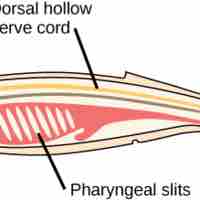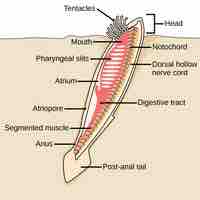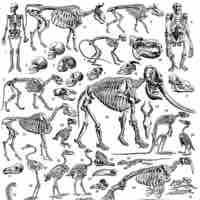Section 1
Chordates
Book
Version 32
By Boundless
By Boundless
Boundless Biology
Biology
by Boundless
4 concepts

Characteristics of Chordata
Animals in the phylum Chordata share four key features: a notochord, a dorsal hollow nerve cord, pharyngeal slits, and a post-anal tail.

Chordates and the Evolution of Vertebrates
Chordata contains two subphylums of invertebrates: Urochordata (tunicates) and Cephalochordata (lancelets).
The Evolution of Craniata and Vertebrata
Both genomic and fossil evidence suggests that vertebrates evolved from craniates, which evolved from invertebrate chordates.

Characteristics of Vertebrates
Vertebrata is a subphlyum of Chordata that is further defined by their bony backbone.